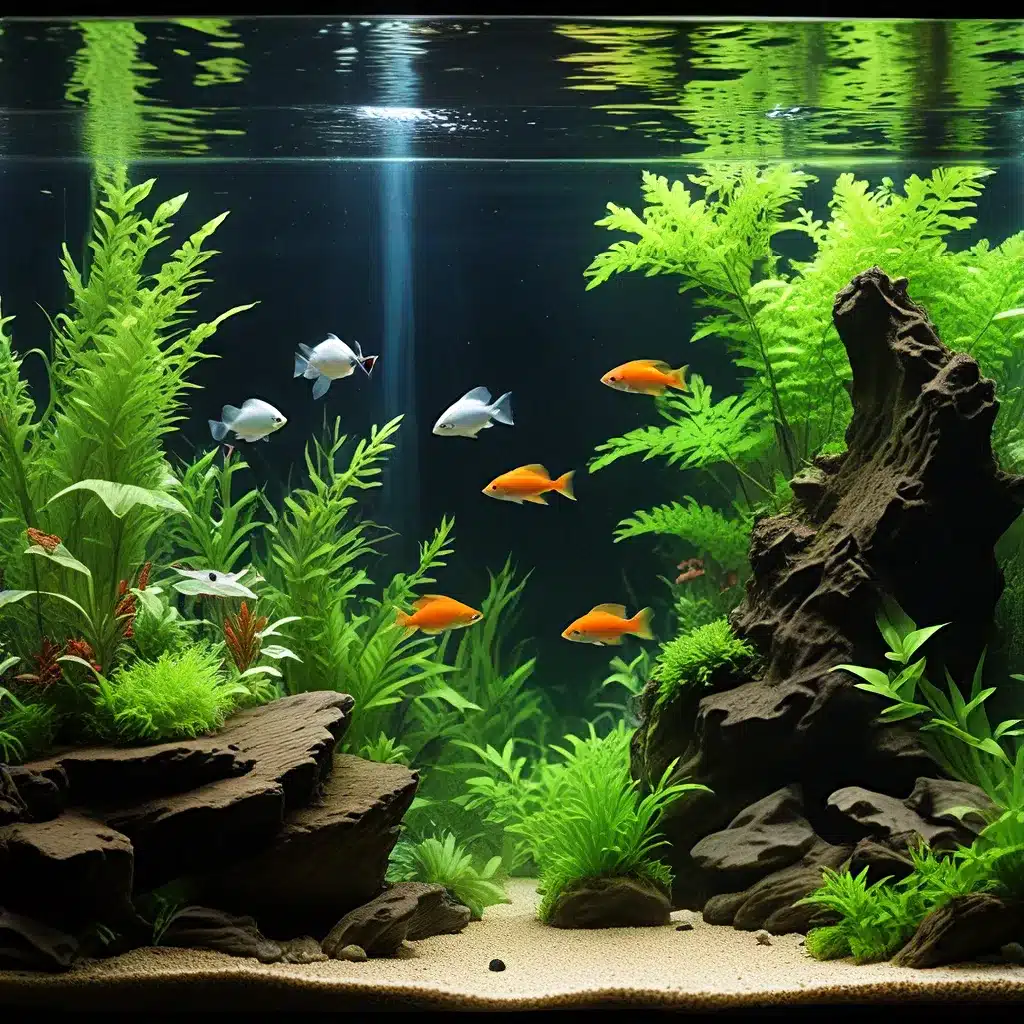
Embracing Eco-Friendly Aquascaping
As an aquarium enthusiast, you have the power to make a positive impact on the environment while pursuing your passion for aquatic life. By adopting sustainable aquascaping practices, you can reduce your carbon footprint and contribute to the preservation of fragile aquatic ecosystems. In this comprehensive guide, we’ll explore practical strategies to help you create a beautiful and eco-friendly aquarium that aligns with your commitment to environmental stewardship.
Responsible Sourcing of Aquarium Materials
The foundation of a sustainable aquarium starts with mindful sourcing of your materials. When selecting hardscape elements and aquatic plants, prioritize sustainably collected and aquacultured options. Opt for rocks, driftwood, and other natural decorations that are ethically sourced, avoiding materials obtained through habitat destruction. For freshwater plants, choose species propagated through aquaculture, as these have a minimal environmental impact and support the preservation of natural aquatic habitats.
For saltwater aquariums, be vigilant in selecting responsibly sourced live corals. Maricultured or farmed coral fragments are an eco-friendly alternative to wild-harvested coral, helping to reduce the strain on fragile coral reef ecosystems. By making informed purchasing decisions, you can contribute to the sustainability of the marine ornamental trade.
Sustainable aquascaping resources
Energy-Efficient Aquarium Management
Aquariums can be energy-intensive, but there are several strategies you can implement to conserve energy and reduce your environmental impact. Start by selecting energy-efficient aquarium equipment, such as LED lighting systems, high-efficiency pumps, and modern heaters that consume less electricity. Proper insulation of your aquarium, using a well-fitting lid or cover, can also help maintain stable temperatures and minimize the need for constant heating adjustments.
Incorporating a timer for your aquarium’s lighting system is another simple yet effective way to mimic natural day-night cycles and avoid wasting energy during periods when the tank lights are not necessary. Additionally, regular maintenance of your aquarium equipment, ensuring it operates at peak efficiency, can contribute to further energy savings.
Energy-saving tips for aquarium owners
Responsible Fish Selection and Care
The species you choose for your aquarium can have a significant impact on the environment, both in terms of their origins and their compatibility within the tank. Avoid invasive species, as they can pose a threat to local ecosystems if accidentally released. Instead, opt for captive-bred fish populations, as they minimize the impact on wild fish populations and promote a more sustainable hobby.
Ensuring proper fish compatibility is also crucial, as overcrowding and aggression can lead to stress, disease outbreaks, and diminished water quality. Take the time to educate yourself on the specific dietary, environmental, and social needs of your chosen fish species to provide them with the best possible care.
Responsible fish selection and care considerations
The Benefits of Sustainable Aquascaping
By embracing sustainable aquascaping practices, you’re not only reducing your environmental impact but also creating a beautiful and thriving aquatic ecosystem. A well-designed, eco-friendly aquarium can provide a visually stunning and captivating display, while also promoting the overall health and balance of its inhabitants.
When you choose to source your materials responsibly, conserve energy, and select compatible fish species, you’re actively contributing to the preservation of fragile aquatic habitats. Your aquarium becomes a testament to your commitment to environmental stewardship, inspiring others to follow in your footsteps and join the movement towards a greener, more sustainable hobby.
Explore our wide range of eco-friendly aquarium supplies and equipment
Conclusion: A Greener Future for Aquarium Enthusiasts
As an aquarium hobbyist, you have the power to make a meaningful difference in the world around you. By embracing sustainable aquascaping practices, you’re not only creating a captivating underwater haven but also playing a vital role in the conservation of our precious aquatic ecosystems. Through your actions, you can inspire others, foster a greater appreciation for the natural world, and leave a lasting positive impact on the environment.
Embark on your journey towards a more sustainable aquarium today. Prioritize eco-friendly sourcing, energy-efficient management, and responsible fish selection to build a thriving, visually stunning, and environmentally conscious aquatic ecosystem. Join the growing movement of aquarists who are leading the way towards a greener, more sustainable future for the aquarium hobby.

